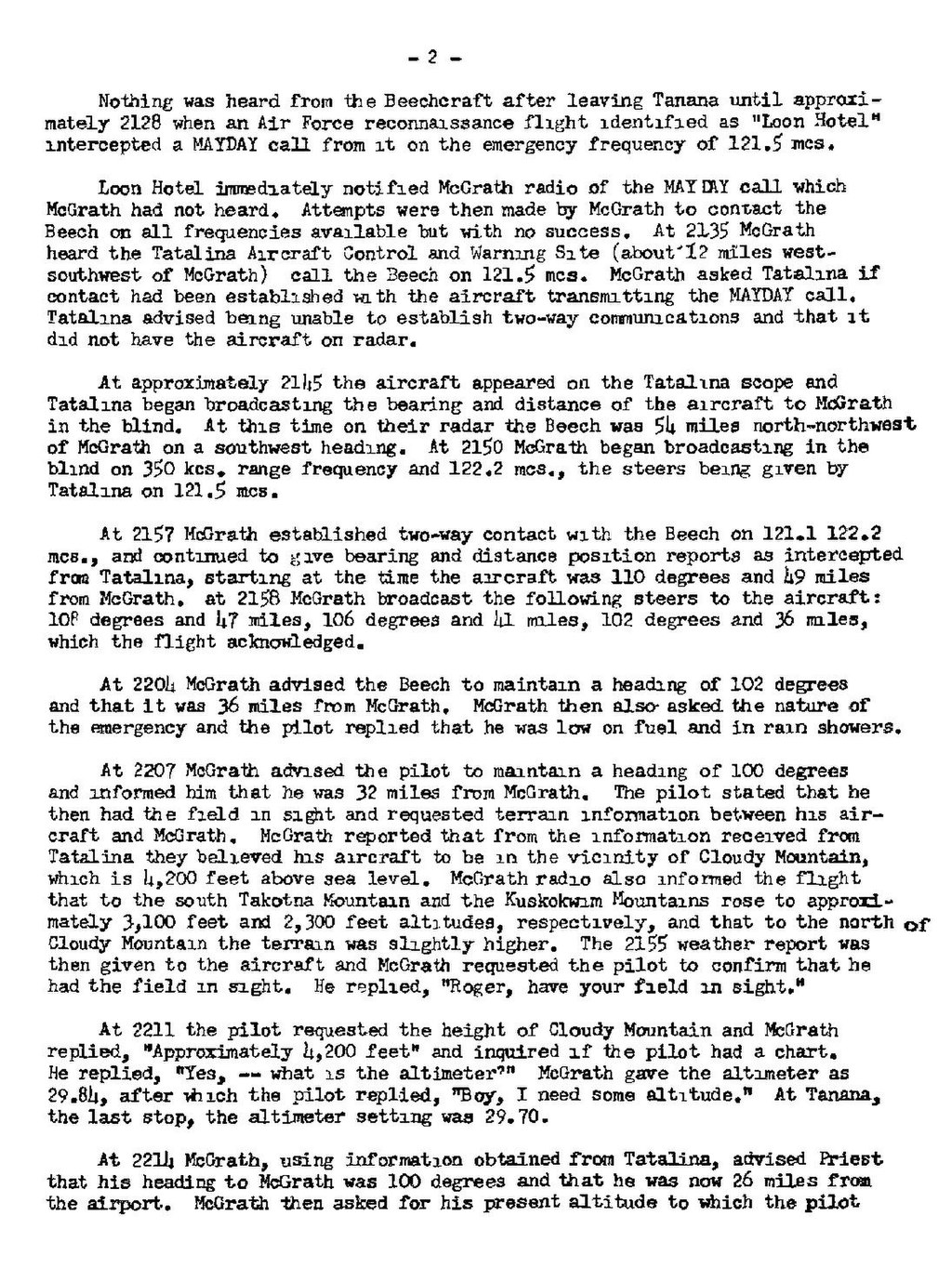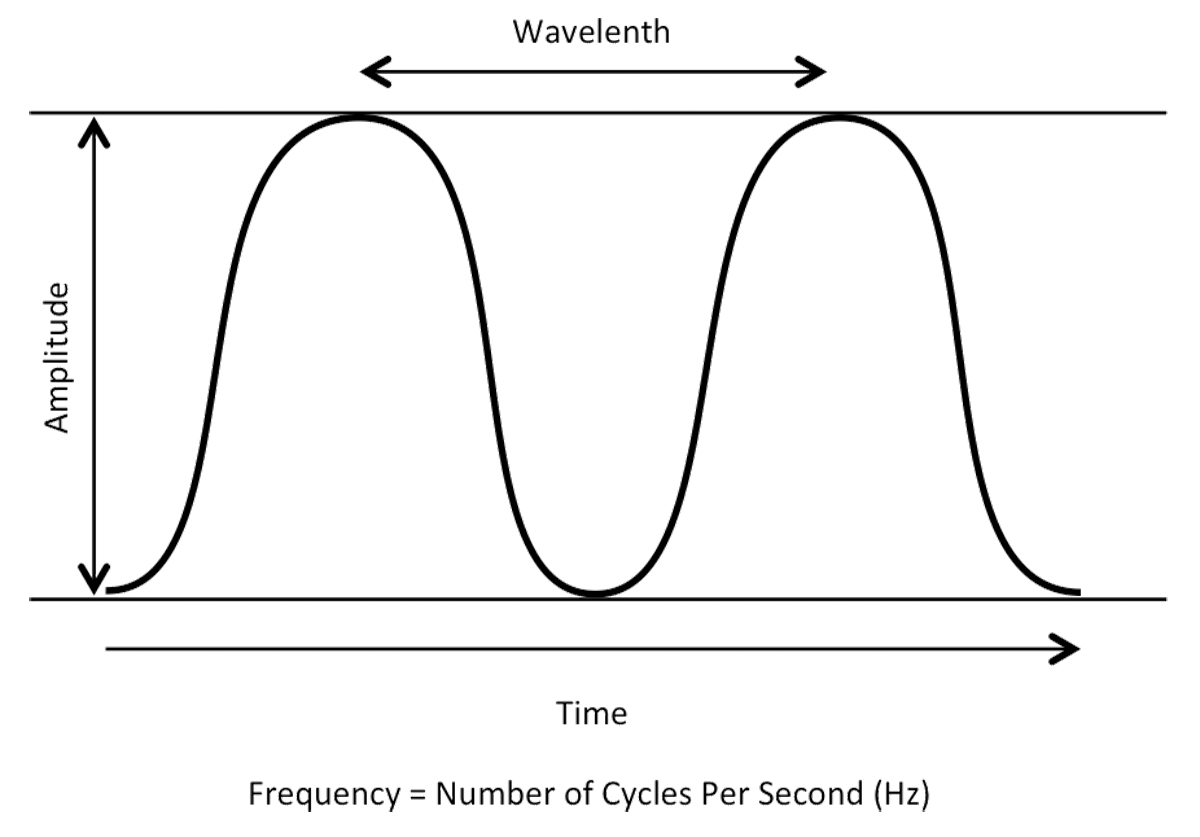Aircraft Emergency Frequency - In the event that electronic communications cannot be maintained between the ARFF IC and the flight crew, standard emergency hand signals as depicted in FIG 6-5-1 through FIG 6-5-3 should be used. These hand signals should be known and understood by all cockpit and cabin aircrew, and all ARFF firefighters.
Even though satellites no longer monitor 121.5 MHz signals, the search and rescue community will still respond when notified through other means. ELTs were originally intended to use 121.5 MHz to inform air traffic control and pilots monitoring the frequency of an emergency.
Aircraft Emergency Frequency

These ELTs continue to serve in that role, relying on fellow pilots and ground-based radio facilities to monitor the signals. As a best practice, pilots should monitor 121.5 MHz when flying and report to air traffic control any ELT alert heard.
Codeshare Airline Partners
Existing 121.5 MHz ELTs continue to meet the FAA's regulatory requirements, but 406 MHz ELTs also meet the regulatory requirement, are monitored by satellites, and enable a more accurate search and rescue response. 118.000 - 121.950 Air Traffic Control (See AirNav)
121.975 - 123.650 Unicom, multicom, Flight Services, Traffic Advisory (CTAF) at uncontrolled airports 123.675 - 128.800 Air Traffic Control (See AirNav) 128.825 - 132.000 Company Airlines Operational Control 132.025 - 136.475 Air Traffic Control (See AirNav)
136.500 - 136.975 Company Airlines Operational Control More specific info can be found at: Aircraft Frequencies There you have it, an essentials list for national emergency radio frequencies. Admittedly, it is a bit of an extensive topic that requires a little pulling apart to understand.
But hopefully this guide will help you in case that unfortunate emergency does actually happen to rear its head. It's advised that you keep coming back and checking this list as it will be constantly updated.
Common Company Frequencies
This is due to specific services changing their frequencies as it suits them. Also, as a reminder, you should definitely have your required national emergency radio frequencies noted down and added to your bug out bag list as a safety precaution!
Airborne planes can easily be heard from well over 100 miles, so you don't have to live near an airport. If you do live near an airport, you can find out all the traffic control, weather, and Traffic Advisory frequencies by entering the airport at AirNav.
Another confusing area is the Codeshare. It refers to a practice where a flight operated by an airline is jointly marketed as a flight for one or more other airlines. For example, Delta has feeder airline partners with Comair, Chautauqua, etc.

So Delta DL456, operated by ComAir, might be COM456, or even COM56. Flight Stats shows both. However, this does not always relate to what you heard. There are many other similar tracking sites, and they don't always show the exact same thing, so it is good to use more than one.
Identifying Aircraft Vs Frequency
I get it, it's a little confusing but think about it like this, when you turn your radio on to a specific station, what you're actually doing is turning into a specific frequency. So say for example you tune into 100.3, the radio frequency that you've tuned into is 100.3 Megahertz.
We will have a look at this concept in more detail in a separate post but you get the idea. The FAA decided against mandates that it deemed would place an undue burden on aircraft owners and decided not to issue an airworthiness directive or policy prohibiting installation approval of units that use hook-and-loop fasteners.
It also decided against withdrawing the TSO authorizations of ELTs utilizing hook-and-loop fasteners for mounting. Neither a revised policy nor withdrawal of TSO authorizations is needed, the FAA said in a Federal Register Notice, because manufacturers with ELT designs incorporating fasteners "which failed to perform their intended function in accidents have either revised or are in the process of revising their designs."
, minimizing the need for policy in this area.” The agency's choice to instead encourage voluntary action, the FAA noted, “avoids placing an undue burden on aircraft owners while acknowledging the voluntary efforts of ELT manufacturers to improve designs.”
Aopas Position On Mhz Mandate
There are no official "national" company frequency allocations, however among larger airlines there are common frequencies that you will find used by each at many different airports. Please note that "common" frequencies are less likely to be valid in busier air traffic areas due to frequency congestion (e.g., the northeast USA and mid-Atlantic USA regions).
Some common allocations include: All commercial and private aircraft in the United States use callsigns that start with the letter 'N'. However, the 'N-number' is normally not used over the air for commercial flights. Private pilots and air traffic controllers often just use the last two or three digits of the callsign and the aircraft type to save precious air time ("Cessna 23-Hotel").
Commercial aircraft generally use the flight number and company name as their callsign ("United 152"). This can be confusing, but FlightAware will give you a list of possible flights with every combination of those numbers. For instance, if you enter ComAir 5650 in the Flight #, or COM5650 in the Flight/Tail #, you should be able to see that it is really ComAir #50.
This will give you departure/arrival airports, and tracking if still enroute. In 2017, there were 8,898 406 MHz ELT activations in the AFRCC area of responsibility and about 98% of those alerts were false alarms. Just 122 of the alerts in 2017 were actual distress cases.

Identifying Frequency Vs Airport
For each false alert, AFRCC specialists put in considerable research and manhours to track down the ELT and owner. Each activation is treated as an emergency so each false alert is a distraction and negatively affects other search and rescue missions.
About 90% of false alerts occur because of beacon mishandling during the testing and maintenance of these systems. A wavelength on the other hand can be described as the length between 1 point on a wave to the exact same point on the next wave.
For example, 1 peak to the exact same point on the next peak. When talking about the relationship between frequencies and wavelengths, the higher the frequency is, the lower the wavelength. A radio wave is an electromagnetic wave distributed by the use of an antenna.
Each radio wave has a different frequency and when you tune your radio receiver to a specific frequency, you have the ability of picking up a specific signal. See how simple that was? This is the same with radio, people use channels instead of long frequencies.
Google Earth D Tracking
CB's and FRS's more often than not only have channels these days so you won't have to worry about fiddling around with frequencies. Of course it's still a good idea to understand how they work. Aeronautical Radio, Inc.
(ARINC) used to be the spectrum manager for company frequencies but after a corporate reorganization, ASRI is now the spectrum manager. ARINC continues to operate a VHF radio network (the ARINC En Route Service) which is used mostly by smaller airlines to relay messages to their dispatchers or to establish phone patches.
Pilots and installers should carefully follow manufacturer's instructions and perform any tests to verify that the ELT will function as intended taking care to avoid triggering a false alert. Per the FAA's ELT Advisory Circular, care should be taken to prevent accidentally triggering a search and rescue response.
Accidental activation of an ELT will generate an emergency signal that cannot be distinguished from that of an actual emergency and could lead to expensive and frustrating searches. Moreover, the unwarranted ELT signal could tie up the emergency frequencies such that a genuine emergency signal would not be picked up.
Spectrum Management
When aircraft are within 20-30 minutes of their destination, they may call in on a company frequency to report equipment malfunctions, delays, rerouting, and the special needs, such as wheelchairs and unaccompanied minors (UM). Sometimes, when they are about 10 minutes off the ground on their trip away from the airport, they call back with the times they were off the gate, and off the ground.

However, ACARS has replaced most of these communications. There's an array of different devices that are used as emergency radios in this day and age. Some are much better than others. Note that there are some legal issues/rules that you should definitely look into when using specific devices.
At most small airports that don't have control towers, the UNICOM frequency is used by the pilots to talk to each other, usually 122.700, 122.800, 122.900, 123.000 or 123.050. Airports with control towers usually have an assigned Unicom channel of 122.950.
Most airports large enough to have control towers have the following types of channels: What are national emergency radio frequencies? Imagine being stuck in the middle of nowhere and your worst fears come to light. You need help but you have nothing but a radio and you're not really too sure how to use it because you've never had to.
Impact Of False Alerts
Well in this post, you will learn everything from devices to tuning them in and of course a list of national emergency radio frequencies which you will need to help you in distress. Let's have a look at a few minor technical details to get you up to speed first…
ELTs are emergency transmitters that are carried aboard most general aviation aircraft in the U.S. In the event of an aircraft accident, these devices are designed to transmit a distress signal on 121.5 and 243.0 MHz frequencies, and for newer ELTs, on 406 MHz.
ELTs are required to be installed in almost all U.S.-registered civil aircraft, including general aviation aircraft, as a result of a congressional mandate. The mandate resulted from the 1972 loss of U.S. Representative Hale Boggs and Nick Begich in Alaska after their aircraft crashed and was never found.
AOPA supports the installation of these more advanced ELTs on a voluntary basis. General aviation is an industry already struggling under the weight of increased regulation and mandated equipment, and the decisions to replace an existing ELT should be left to the discretion of the aircraft owner.
International Requirements
Therefore, AOPA does not support any attempt to mandate or otherwise require the replacement of existing 121.5/243 MHz ELTs with 406 MHz units. However, the association does support the education of pilots and aircraft owners as to the limits of 121.5/243 MHz ELTs and the benefits of 406 MHz units.
The aircraft emergency frequency (also known as guard) is a frequency used on the aircraft radio band reserved for emergency communications for aircraft in distress. The frequencies are 121.5 MHz for civilian, also known as International Air Distress (IAD) and 243.0 MHz for military use, also known as Military Air Distress (MAD).
Both are in use at the international level. On the ground, you may find airline ground operations in the 460.65-460.9 MHz range. Often, you can learn of flight delays, cancellations, or gate changes on the 460 frequencies before they are announced.
These frequencies are not listed at AirNav. Incorrectly disposed of ELTs have caused numerous false alerts and greatly increased the workload for first responders. In California, one Civil Air Patrol squadron searched through trash for six hours at a local recycling facility to locate an ELT and disconnect its battery.
Pilots and mechanics should take care to dispose of an old ELT in a manner that assures it will not cause a false alert. The ELT manufacturer will normally include specific disposal guidance but removing the antenna and battery is the industry standard.
ELTs are mounted aft in the airplane, and designed to be triggered upon impact or may be manually activated using the remote switch and control panel indicator in the cockpit. Activation of the ELT triggers an audio alert, and 406-MHz ELTs transmit GPS position for search and rescue.
When searching or monitoring the airport specific frequencies, such as Approach/Departure, Clearance Delivery, Tower, ATIS, etc you can usually find out what airport you are hearing by typing airnav freq state, into a Google search box.
With Google Earth installed on your PC, you can not only track one or several flights, but you can "rotate" the view when a plane is near an airport and see it actually descending or climbing.
This is really neat! Download Google Earth free. Then go to FBOWeb General Apps or FBOWeb Specific Flights Aviation Spectrum Resources, Inc. (ASRI) is the spectrum manager for aeronautical "company frequencies" (128.825-132.0 and 136.5-136.975). ASRI licenses all the frequencies with the FCC and assigns them to other users, so unfortunately the FCC data only provides part of the story but it is a start.
The primary users of these frequencies are airlines but they are also used by Fixed Base Operators (FBOs), corporate aviation bases, some medevac services and other entities. A 1994 regulation change, 14 CFR Part 91.207(d), requires a separate sign-off or annual inspection for the ELT.
The mechanic actually makes a separate log entry about the ELT. This usually will occur at the same time of the aircraft's annual inspection, but it doesn't have to. The unwary pilot in command could miss the timing on this inspection and find himself in the same trouble as if he had flown with an airworthiness directive compliance time missed.

As we know, the mechanic's signature at an annual is a statement of condition at that time and does not guarantee that everything will remain airworthy until the next annual. Older Emergency Locator Transmitters (ELTs) transmit on 121.5 in case of impact.
Newer ELTs transmit on 406 MHz, with a low power beacon on 121.5 MHz for local homing. Satellites listen for the signals and alert local personnel to the emergency, and the beacon allows search and rescue to find the scene of the accident faster.
406 MHz beacons are encoded, allowing the vessel of origin to be determined and false alarms quickly verified. Satellite support for the 121.5-only versions is being phased out in early 2009. [1] Now you have a fair idea of all the technical stuff but what if you just want to turn your device on and start tuning in?
As mentioned earlier, each device is manufactured and created differently. You will need to tune into frequencies on some devices. Others will just require you to flick through channels. It's really as simple as it sounds.
Each device will have a dial/knob that you can use to “scroll” through each frequency. Every analog device these days is clearly marked with certain increment frequencies. Digital devices however, are even easier. They will show each separate frequency that you can dial into.
Please note: To know which frequency to tune into for your local police or fire department, you'll need a frequency guide or directory for your locality. Otherwise the below list is an extensive list of other emergency service radio frequencies
A frequency is the rate at which something occurs over a particular period of time or in a given sample. So in radio (or sound) terms, the frequency is the number of waves that occur per second.
Waves are measured in Hertz, so 1 Hz is 1 wave. But, you've probably seen frequencies on specific devices that read 1000kHz or 225 MHz or 770 GHz. So what does the k, M or G stand for?
They refer to amounts of the information that are transmitted per second in higher multiples. If you are an experienced radio user then you will more than likely skip over this section. (It won't be held against you!).
But for those of you who may have gone out and bought yourself a shiny new radio for the first time, you may have a few questions surrounding their usage. So, you've opened the box and had a quick flick through the instruction manual.
You're pumped to start getting used to the damn thing. You've planned a hike or camping trip already for heck's sake! Then you get to this section that talks about frequencies….huh? What is a frequency and how do they actually work?
Investigations into several aircraft accidents found that ELTs mounted with hook-and-loop fasteners did not transmit an emergency signal because they were dislodged from their mounting trays on impact, severing the antenna connection. These fasteners may not retain the ELT if insufficient tension is applied to close them, if they stretch or loosen over time, if debris contaminates the hooks and loops, or if the fasteners degrade due to environmental factors.
air traffic control radio frequencies, common aircraft radio frequencies, faa emergency frequency, listen to aircraft frequencies, airline radio frequencies, aircraft radio frequencies for scanners, aircraft hf radio frequencies list, aircraft radio frequency list